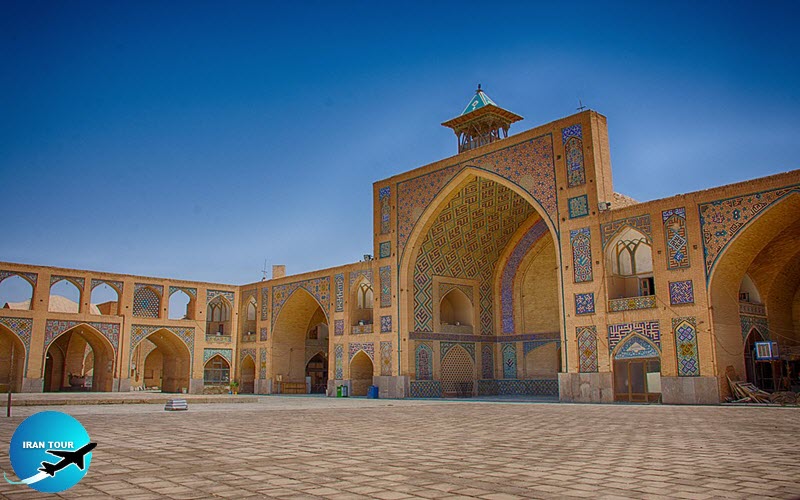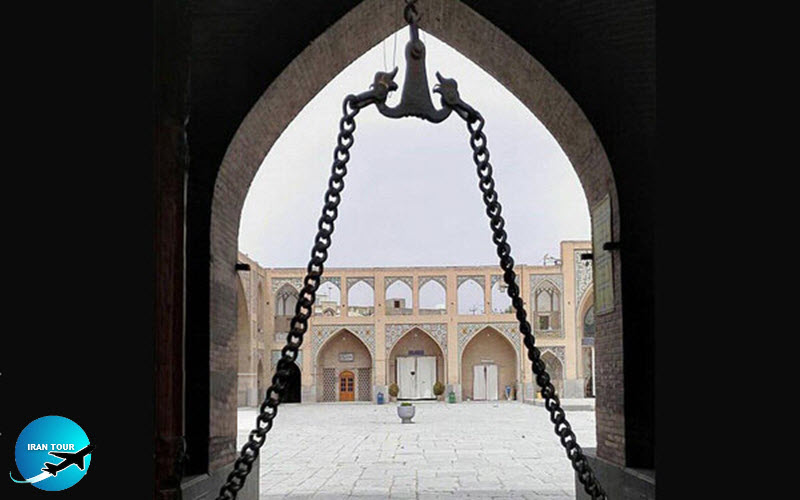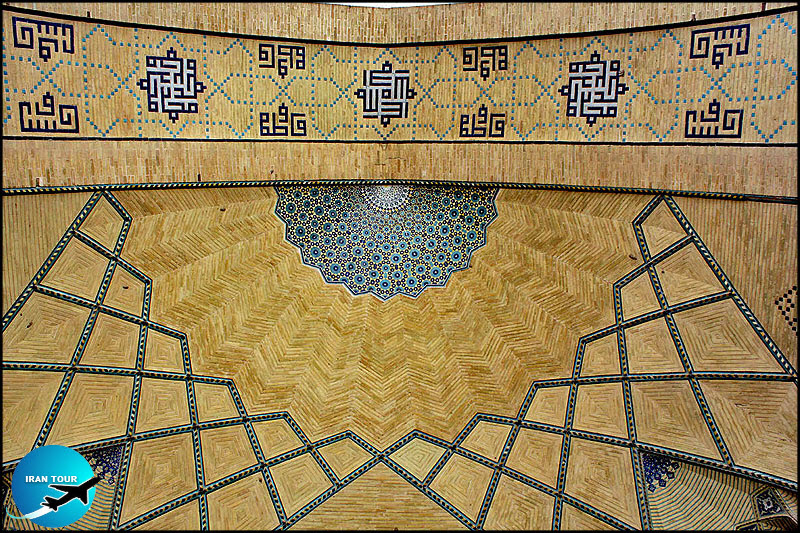Copyright 2020 - 2021 irantour.tours all right reserved
Designed by Behsazanhost
Hakim Jam e Mosque
Hakim Jam e Mosque', the Incentive of the most Sincere Mystical Feelings
In the beginning, it is preferred to introduce this mosque with two lines of Farsi poetry that exist on the tilework of its northern porch:
In the nice mosque of Hakim Davoud, On the porch over, that Muezzin stood,
Anybody says sincerely and truly prayer, Undoubtedly, is accepted no later.
It is located on the mid-eastern side of Hakim Street, as another Jame mosque' of Esfahan, a substitute for an older Jam-e-Mosque' built by the order of Sahab Ibne Abbad, the learned minister of the Deylamite period, called: Jam e Jorjir Mosque'. Mafarokhi, the famous historian of the 11th century A.D., has explained its extremely high minaret which was more than 104 meters high and destroyed either by the Mongols or the Timurids during their invasion of Esfahan. Thus, it is a testimony to its useful function as a suitable watchtower for the safety of the city. The name "Jorjir' is the Arabic pronunciation of 'Gorgir', and is related to its topographic feature, that is, the terrain's ups and downs still visible.
The Devlamite Mosque was destroyed gradually, concurrent with the reign of Shah Abbas II. In opposition to one of the particular physicians of the king (Hakim Davoud Khan), some conspiracies hatched in such a way that he himself was exiled to India because his life was threatened. In a short time, he was accepted as the special physician of the courtier there and again became a very rich man.
The claimant in charge of rooting out us,
Disregarding favors of the Lord with us.
 |
According to the travelogue of Bernier, Hakim Davoud, after participation in the war between Orange Zieb and his brothers, received an honorary high position in the court. Since being a kind and compassionate person, he drafted a part of his capital for his family in Esfahan to rebuild a new mosque in place of the ruined Jam-e-Jorjir. This mosque, with an area of 8000 square meters, is the third old Jam-e Mosque' of Esfahan, with a four-porch design and a popular style of ornamentations. A visitor to its northern porch finds some decorative writings; one of them stating a Farsi poem whose great composer describes fancifully the devotion of his wealth :
Verily the key, to the Hakim Treasury, Is the name of Allah, the source of mercy.
Majority of the inscriptions in this mosque are done by Mohammad Reza Emami, the most diligent calligrapher of historical monuments of Esfahan. There is a line of poetry on the eastern portal of the mosque, giving the date of its completion by summing up its alphabetic letters; each one signifying a number, so the calculated date is 1657 A.D.:
 |
The main courtyard is about 3200 square meters, with four main portals: each one having some different attractions. Definitely, the most precious portal is on the northwestern part, as one of the original Deylamite gateways is covered by a thick layer of mud and straw. About 47 years ago (1954 A.D.), Esfahan tolerated an unprecedented rainfall that washed down the added layer of the portal. Consequently, a hidden artistic treasury was revealed, which led archeologists to adapt their previous judgments about some particular Esfahani patterns, so it was tantamount to a lost ring from the golden chain of the local archeology. Hakim Mosque enjoys two sundials, one like a right-angle triangle made of stone (a 50centimeter hypotenuse), and the other one, on the top of the northwestern corner, with the dimensions of 1.2 meters by 0.9 meters by 0.35 meters made of the baked bricks coated by plaster with carved face in a radial form.
 |
The main part of the building is on the south, a dome chamber topped by a main dome in the center (11.5 meters by 11.5meters). The main Mehrab is 2.5 meters. Its Mehrab is very precise, with a size of 2.5 meters by 1.15 meters by 1 meter. One of the most significant characteristics of my mosque is its decorative style, an extraordinary combination of tiny pieces of mosaic and baked bricks called professionally, Moaghelli (charged with thinking). This ornamentation is one of the outstanding points that awakens the profound mystical feelings in the crystal heart of every outstanding point of the mosque crystal heart of every wise man It is narrated that while building the mosque, to carry the building materials faster, beasts of burden were being beaten or bothered. After hearing about this. Hakim Davoud ordered the buildings to be destroyed and mandated that. the building founded on the agony of animals would not be a real mosque, so rebuild it and this time with mercy to them. This could be mentioned as a real charter for the consideration of the rights of animals by a great Esfahani physician that, in the 17th century, was an important message to mankind today. The message, if considered globally, we would not still be eye witnesses to so many unbelievable, horrible actions against human beings all over the world in the third millennium.
- Details
- Category: Museums of Esfahan








